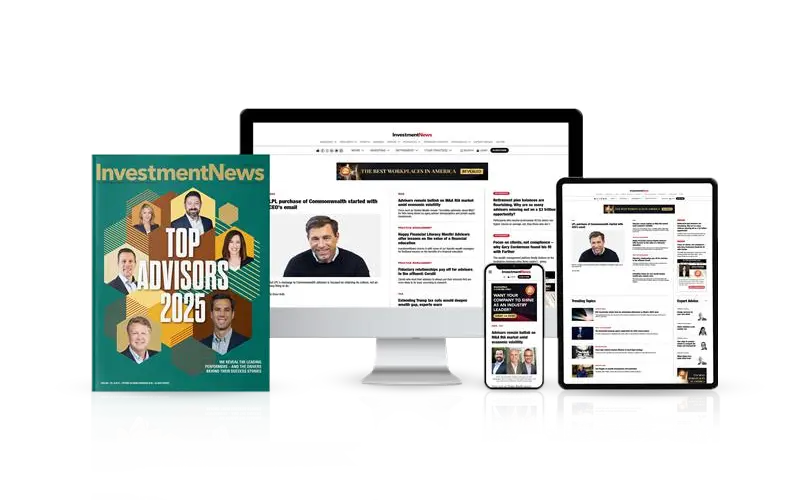

As the pandemic enters its third year and everyday life takes on some semblance of normalcy, the InvestmentNews team looks back at the most interesting developments of 2021.
The 2021 investing story can be summed in three letters: ETF.
In the midst of an impressively strong stock market, especially when considered against the backdrop of a persistently evolving global pandemic, investors have poured money into exchange-traded funds like never before.
Through the end of November, ETFs experienced $787 billion worth of net inflows, which shatters the 2020 record of $540 billion.
In fact, according to Nate Geraci, president of The ETF Store, if 2021 reaches the likely total net flow level of $841 billion or more it will surpass in 12 months the best 24-month period of combined flows ever in the ETF space.
Todd Rosenbluth, director of mutual fund and ETF research at CFRA, said the record flows into ETFs is the result of a confluence of circumstances, not the least of which is “broad-based demand and greater usage by financial advisers.”
“Some of the money is also coming out of mutual funds, as ETFs have proven to be more tax-efficient, tend to outperform active mutual funds,” he said. “Also, we’re now seeing a younger generation of investors and advisers that are comfortable with the ETF structure and the ability to target their portfolios.”
After decades of insisting mutual funds and ETFs can coexist in a large and diverse market of investors, the mutual fund industry expressed another sign of near surrender in 2021 in the form the first-ever mutual fund conversions into ETFs.
Guinness Atkinson Asset Management broke the seal on the conversion strategy with two mutual funds in March. Since then, such notable fund complexes as Dimensional Fund Advisors and J.P. Morgan have followed suit with their own plans to convert mutual funds to ETFs.
“This never happened before 2021,” said Rosenbluth. “It seemed too complicated to accomplish, and it also required asset managers embracing the reality that ETFs are here to stay -- and in some ways, a better structure than mutual funds -- and that asset managers were willing to forego some of the revenue from mutual fund fees.”
And let’s not forget the rollout of cryptocurrency ETFs, or rather, ETFs investing in crypto futures contracts, which is as close as U.S. regulators have allowed ETF investors to get to a registered cryptocurrency fund.
After more than eight years of negotiating with regulators, the ProShares Bitcoin Strategy ETF (BITO) was first out of the blocks in October with a fund that promises cryptocurrency exposure through futures contracts.
Despite the more complex strategy and amplified risks associated with the underlying options exposure, investors charged in. Over the first two days of trading, BITO reached $1 billion in assets, breaking a record set in 2004 when SPDR Gold Shares (GLD) reached the $1 billion mark in its first three days of trading.
To read the rest of this series:

Rajesh Markan earlier this year pleaded guilty to one count of criminal fraud related to his sale of fake investments to 10 clients totaling $2.9 million.

From building trust to steering through emotions and responding to client challenges, new advisors need human skills to shape the future of the advice industry.

"The outcome is correct, but it's disappointing that FINRA had ample opportunity to investigate the merits of clients' allegations in these claims, including the testimony in the three investor arbitrations with hearings," Jeff Erez, a plaintiff's attorney representing a large portion of the Stifel clients, said.

Chair also praised the passage of stablecoin legislation this week.

Maridea Wealth Management's deal in Chicago, Illinois is its first after securing a strategic investment in April.
Orion's Tom Wilson on delivering coordinated, high-touch service in a world where returns alone no longer set you apart.
Barely a decade old, registered index-linked annuities have quickly surged in popularity, thanks to their unique blend of protection and growth potential—an appealing option for investors looking to chart a steadier course through today's choppy market waters, says Myles Lambert, Brighthouse Financial.
